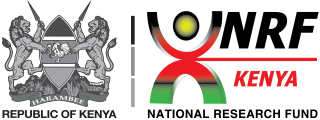Browsing by Author "Konana, Charity"
Now showing 1 - 2 of 2
Results Per Page
Sort Options
Publication DRIVERS OF GULLY EROSION: CASE STUDY, NAROK COUNTY, KENYA(International Journal of Social Science and Technology, 2017-04) Konana, Charity; Gachene, Charles; Mburu, David; Mureithi, Stephen; Gicheru, Patrick; Khalif, ZeinabuSoil erosion is a serious issue in Arid and Semi-Arid lands and affects community livelihoods and soil conservation efforts. The objective of this paper is to assess drivers of gully in Narok County, Kenya. The driving forces of soil erosion can lead to gradual loss of the adaptive capacity of the soil and its ecosystem.Agricultural intensity without soil conservation measures is linked to greater water erosion. Overgrazing is one of the main drivers of gully erosion in rangelands. Global warming puts more regions at high risk of gully erosion in the future. The projected scenario (2030) showed an increase in the area under shrubland, cropland and close natural forest and a decrease in grasslands and open natural forest in Narok County. This indicates overgrazing and deforestation will reduce vegetative cover resulting in increased runoff in the County.Further research in land use changes such as change in scale and intensity needs to be done particularly in the arid and semi- arid areas. More soil erosion studies that take into account socioeconomic factors are required. Projected land use and land cover change and climate scenarios are also needed particularly in relation to gully erosion.Publication LAND USE AND LAND COVER CHANGE AND ITS IMPLICATIONS ON GULLY EROSION(International Journal of Scientific Research and Innovative Technology, 2017) Catchment, IN Suswa; County, Narok; Konana, Charity; Gachene, C.; Mburu, D.; Mureithi, S.; Gicheru, P.This study investigated land use and land cover change for the last 26 years in Suswa Catchment, Narok County using satellite imageries. Changes in land use and land cover (built up areas, agricultural land, grassland, bareland and shrubland) for 1985-2000, 2000-2011 and 1985-2011 were determined using Chisquare test. Results showed no significant changes in built up areas, agricultural land, bareland, grassland and shrubland during the period. Overall change of built up area, shrubland, bareland, agriculture increased in 26 years, while grassland decreased. Grasslands were therefore converted to build up areas, shrubland, bareland and agricultural areas during this period. An increase in built up area, bareland and agricultural land and a decrease in grassland are therefore drivers of gully erosion. A decrease in grassland results in an increase in soil erosion. Projections (2020) indicate a significant increase in built up area, agricultural land and bareland and a decrease of grassland.

